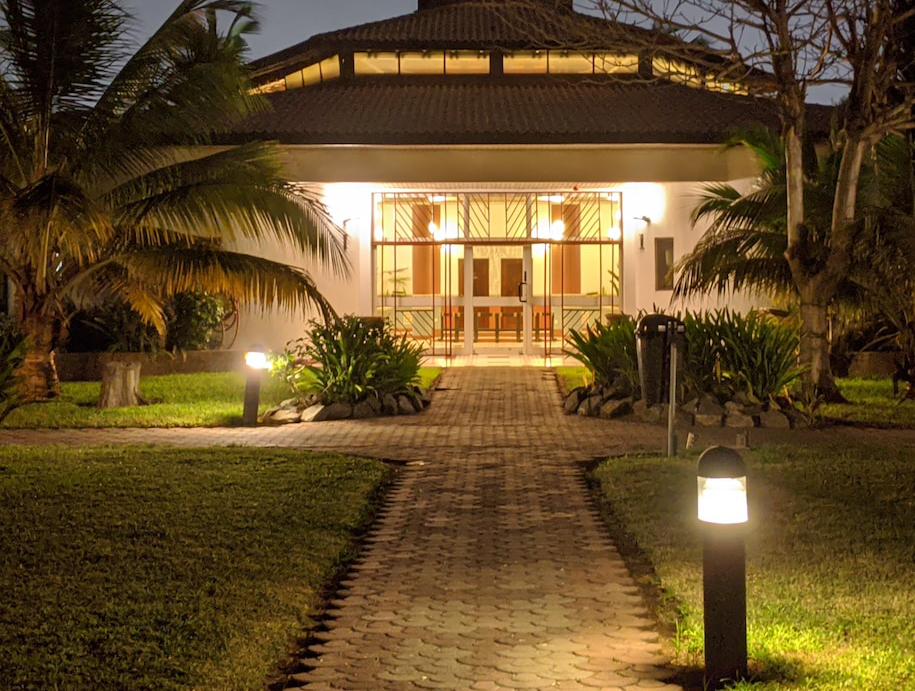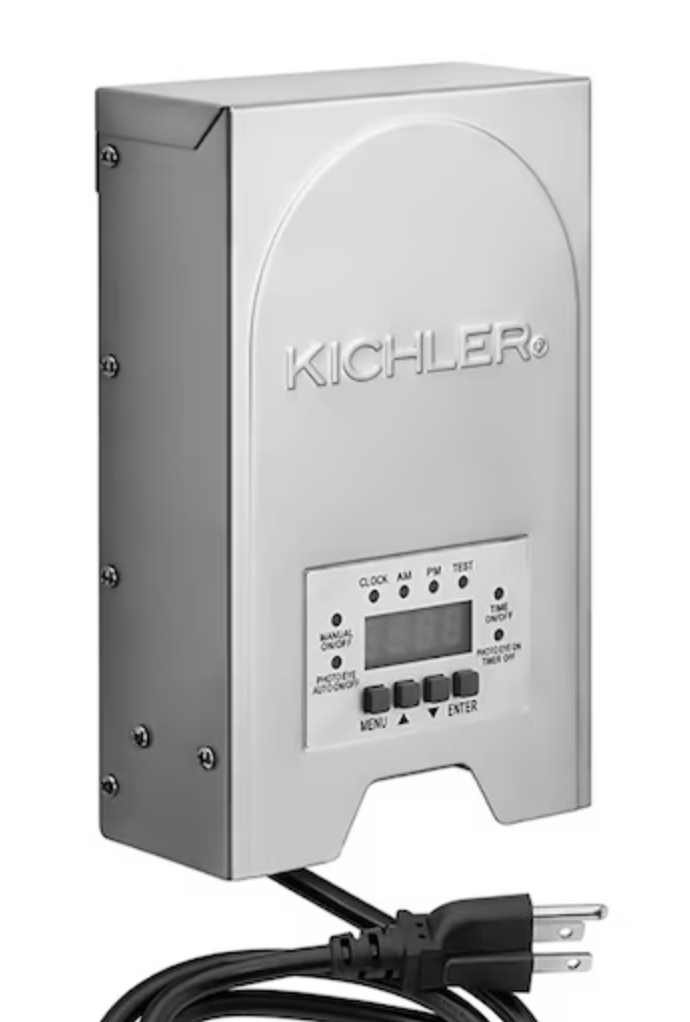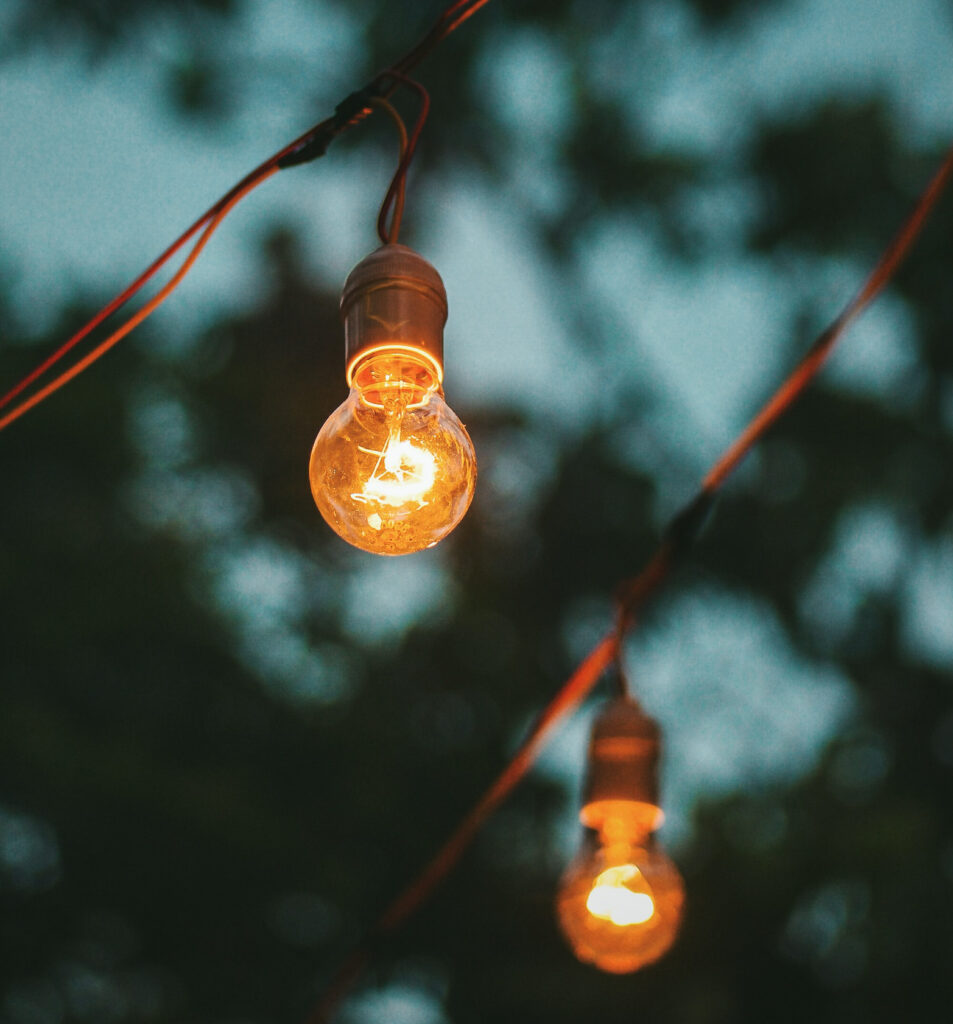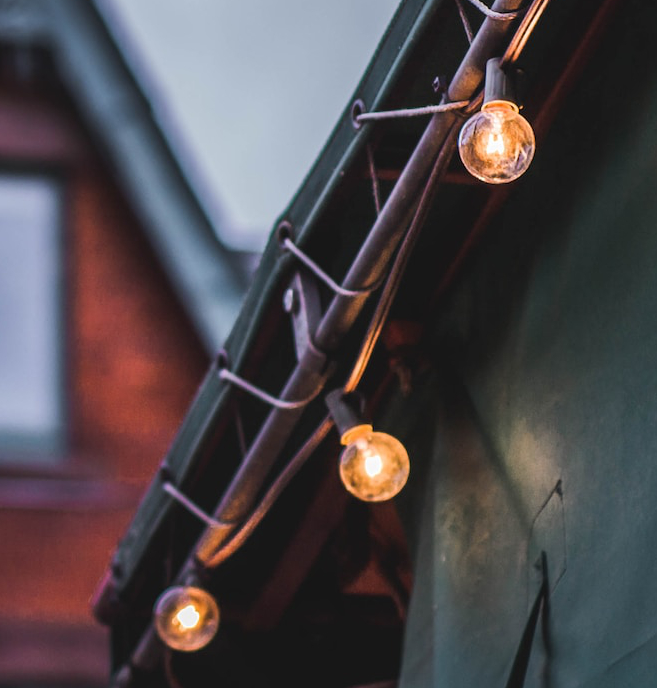
Eliminate tripping hazards and illuminate paths with low-voltage landscape lights.
Photo by YingChu Chen on Unsplash
Tired of that dark driveway or that rocky garden path becoming a trip hazard at night? Or are you looking for some elegant accent lights to showcase your garden bed or firepit after dark? Your best solution may be low-voltage landscape lighting.
Unlike standard lighting, low-voltage lights have several advantages. Drawing minimal power, they are safer and more economical to use. They can be installed confidently by do-it-yourselfers, they don’t need conduit around wires before burying them along your path, and there are plenty of beautiful choices to illuminate and showcase any driveway or path.
Let’s take a look at what they are and why you should consider them for your next outdoor lighting project.

Photo by Lowes
What is low-voltage landscape lighting?
As the name implies, it’s lighting that runs on very low voltage, usually 12 volts. That’s just a tenth of the power of standard line voltage, which translates to cost savings, as well as safety for do-it-yourselfers.
12 volts of power is not enough juice to cause any injury if exposed to the current directly or in wet conditions.
One reason low-voltage lighting is much more efficient is the use of LED lights that require very little power. In contrast, traditional incandescent bulbs require far more power, because only about 10% of that power becomes light. The remainder is burned up as heat. Cool, efficient LEDs convert 80% of the energy we feed them into light, resulting in higher light output from far less power, as well as long life reaching into tens of thousands of hours. So far, so good!
In order to use low-voltage landscape lighting, you’ll need a transformer to convert your home’s power down to a much lower level to power your lights. They’re so easy to install, your grandmother probably could do it, but we don’t recommend assigning this task to her. Just let Granny rest. All it takes is to attach the transformer to a wall of your home near and outlet, and plug it in (after you’ve set up the lights and attached your lighting system wire to the transformer). That’s about it.
Is low-voltage lighting right for your project?

Photo by Carson Arias on Unsplash
If you’re thinking of adding outdoor lights to illuminate your driveway, light up paths, or showcase the best features of your home landscaping, low-voltage lighting is your best choice all around. If you’re not planning to do it yourself, your installation costs will be reduced greatly.
Here are some of the benefits:
- Bulbs last much longer (up to triple the lifespan of conventional bulbs), which means less time spent rooting around for burned out lights.
- Cost-savings come from using less power and fewer bulb changes
- Low temperature bulbs are easier on plants
- Ease of installation – fixtures tie into the system with ease
- Greatly reduced risk of electrical hazards in wet garden landscapes
Today’s low-voltage lighting systems utilize LED bulbs. A word of advice: Don’t buy the ones with the integrated LEDs. When those fixtures burn out, there’s no way to replace the bulb, so you will need to replace each fixture as it burns out. Although the set saves you some money up front, you’ll end up spending a lot more over the long haul.
Smaller is bigger
There are some minor downsides to low-voltage lighting. With lower power, the distance that lights can be placed from the transformer has limits, along with the number of lights. To get a greater distance, use a thicker wire gauge – for example, 10-gauge wire carries more juice than 12- or 14-gauge. Don’t forget, when you’re figuring out wiring specs, the smaller the number, the bigger the wire! 100-150 feet from the transformer is doable, and some systems can power up to 300 feet. Plan your project carefully before buying, and then make sure the specs of the system you purchase will meet your needs.
The other limitation can be the number of fixtures your system can handle. This depends on the capacity of your transformer. Each transformer has a maximum wattage output, which must not be exceeded. If your transformer has a 100-watt limit, you can hook up eight 12-volt lights to it. Larger transformers are available, and a 300-watt transformer will power up to 25 12-watt bulbs.
Click here for an example of a 300-watt transformer.
Easy does it!

Photo by Victoria Heath on Unsplash
The greatest advantage of low-voltage landscape lighting is its ease of installation. When you eliminate the risk of injury from line voltage currents, it opens the do-it-yourselfer to a wide range of creative options.
Do you want to run lights up the trunk of a tree or along your roof line? Since there’s no need to run protective conduit, you can just use wire staples to secure the wiring.
Also, you don’t need any special digging equipment to run low-voltage lights. For driveways, paths, and landscape beds, the wiring can be placed under just a few inches of mulch to keep it out of site.
Watch this video to see how easy it can be to install low-voltage landscape lighting.
Looking to get really fancy? Add color to your low-voltage LED lighting. A variety of color temperatures are available, from an array of different whites, as well as colors like red, green, and blue. You can even find color-changing RGB systems with programmable color controllers for dramatic color-changing effects.
So, go ahead and take the plunge! Choose low-voltage lighting for your next outdoor lighting project.
Buying or selling a home?
Avoid unpleasant surprises! Contact Asheville Home Inspector Peter Young before signing any contracts. Call (828) 808-4980, or click here to make an appointment.